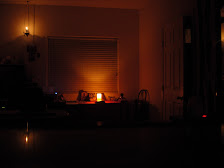 Commemorated on April 19
Commemorated on April 19St Simeon the Bare-Foot [Bosoi] was the son of a priest. When he was fifteen years old, he came under the spiritual guidance of Pachomius, the Bishop of Demetriada (Larissa diocese), who tonsured him and ordained him as hierodeacon. Desiring to follow a strict monastic life, St Simeon soon went to a monastery near Mount Olympus, and then to Mount Athos, to the Lavra of St Athanasius.
By his humility and obedience he gained the respect of the brethren and was ordained hieromonk. After he transferred to the Philotheou monastery, he intensified his God-pleasing labors, he became an example for the brethren, and was unanimously chosen as head of this monastery. Later, through the cunning of the Enemy of mankind, St Simeon had to endure the complaints of monks who thought he was too strict.
Leaving it to God to judge the culprits, St Simeon left the monastery and went to Mt. Phlamourion on Mt. Pelion. There, in solitude and quiet, with neither roof nor fire, the holy hermit engaged in spiritual struggles dressed in old clothing, almost without food, in constant prayer either standing or on bended knees. After three years, he was found by certain God-loving people. Inspired with reverence for his way of life, they begged him to allow them to live with him.
After seven years, through the efforts and zeal of St Simeon, a monastery was formed. A church was built in honor of the Most Holy Trinity, where he served the Divine Liturgy every day. When the life of the brethren in the wilderness monastery had been put in order, the wise servant left the monastery and began to preach the Word of God in Epirus, Thessaly and Athens.
By his instructions and teaching the saint strengthened the wavering in their faith, and he set those in error on the path to salvation. He made those who were strong in their faith even stronger, and he taught everyone to love one another, and to attend church on Sundays and feastdays.
The boldness of the holy confessor aroused the malice of the opponents of Christianity. In the city of Euripa they slandered St Simeon before the city ruler, Ayan, accusing him of converting a Turk to Christianity. The saint was arrested and sentenced to public burning. However, God did not permit the unjust sentence to be carried out.
The condemned one was led to his interrogation in shackles, barefoot [bosoi] and in an old rassa. St Simeon, inspired by the Holy Spirit, answered the governor so wisely that Ayan could not impose the death sentence. The saint received his freedom and continued his efforts, sealing his preaching with healings and miracles.
Many followed St Simeon and submitted themselves to him. He accepted everyone, blessed them for the monastic life, and sent them to his monastery.
St Simeon ended his life at Constantinople. He fell asleep in the Lord and was buried by the Patriarch at Chalke, in a church dedicated to the Most Holy Theotokos. After two years, when the monks of the Phlamourion monastery decided to transfer his holy relics to their monastery, and his grave was opened, an ineffable fragrance came forth, and healings began.
The Life and the Service to St Simeon were published at Smyrna in 1646.
SOURCE:
SAINT OR FEAST POSTED THIS DATE 2014(with 2013's link here also and further:, 2012, 2011, 2010, 2009 and even 2008!):









.jpg)






No comments:
Post a Comment